-
 Bitcoin
Bitcoin $84,566.1805
-0.57% -
 Ethereum
Ethereum $1,592.2699
-0.60% -
 Tether USDt
Tether USDt $0.9999
0.00% -
 XRP
XRP $2.0827
0.05% -
 BNB
BNB $595.0697
0.54% -
 Solana
Solana $133.8668
-0.51% -
 USDC
USDC $0.9999
0.01% -
 Dogecoin
Dogecoin $0.1581
0.11% -
 TRON
TRON $0.2414
-3.25% -
 Cardano
Cardano $0.6267
0.55% -
 UNUS SED LEO
UNUS SED LEO $9.2366
2.17% -
 Chainlink
Chainlink $12.5949
0.15% -
 Avalanche
Avalanche $19.1131
-0.90% -
 Toncoin
Toncoin $3.0082
1.10% -
 Stellar
Stellar $0.2418
0.58% -
 Shiba Inu
Shiba Inu $0.0...01233
3.67% -
 Hedera
Hedera $0.1654
1.00% -
 Sui
Sui $2.1393
-0.24% -
 Bitcoin Cash
Bitcoin Cash $342.0697
2.59% -
 Litecoin
Litecoin $76.9074
1.71% -
 Polkadot
Polkadot $3.6967
1.20% -
 Hyperliquid
Hyperliquid $16.8937
0.83% -
 Dai
Dai $0.9999
-0.03% -
 Bitget Token
Bitget Token $4.3923
0.72% -
 Ethena USDe
Ethena USDe $0.9991
0.00% -
 Pi
Pi $0.6199
0.69% -
 Monero
Monero $217.2905
0.20% -
 Uniswap
Uniswap $5.1988
-0.89% -
 Pepe
Pepe $0.0...07244
-1.72% -
 OKB
OKB $50.5192
-0.32%
What is the DAG structure of blockchain?
DAGs in blockchain allow for parallel transaction processing, enhancing scalability and efficiency, but pose challenges like potential double-spending attacks.
Apr 11, 2025 at 07:50 pm
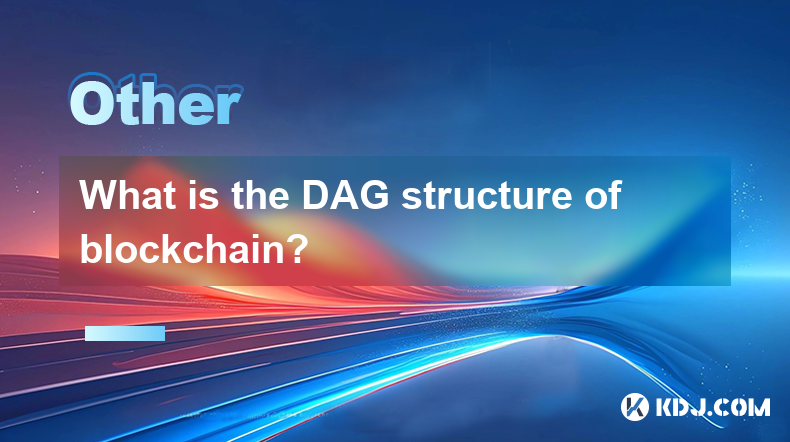
The Directed Acyclic Graph (DAG) structure represents a unique approach to blockchain technology, diverging from the traditional linear chain of blocks. In a DAG-based system, transactions are linked in a way that forms a graph, where each node represents a transaction, and the edges represent the direction of the transaction references. This structure allows for multiple transactions to be processed simultaneously, potentially increasing the scalability and efficiency of the network.
Understanding the Basics of DAG
A Directed Acyclic Graph is a type of graph where the edges have a specific direction, and there are no cycles. In the context of blockchain, this means that transactions can reference multiple previous transactions, but they cannot form loops. This structure is fundamentally different from the traditional blockchain, where each block is linked to the previous one in a linear fashion. DAGs enable a more flexible and potentially faster transaction processing system, as multiple transactions can be validated and added to the network concurrently.
How DAG Differs from Traditional Blockchain
In a traditional blockchain, each block contains a set of transactions and is linked to the previous block through a cryptographic hash. This creates a linear chain where each block must be validated and added sequentially. In contrast, a DAG-based system allows transactions to be linked to multiple previous transactions, creating a more complex network of interlinked transactions. This can lead to faster transaction processing times and higher throughput, as the system does not need to wait for the validation of a single block before proceeding.
Key Advantages of DAG in Blockchain
One of the primary advantages of using a DAG structure in blockchain is the potential for increased scalability. Because transactions can be processed in parallel, the network can handle a higher volume of transactions per second compared to traditional blockchains. Additionally, DAGs can reduce the need for mining, as transactions can be validated through a consensus mechanism that does not require the energy-intensive process of solving complex mathematical problems. This can lead to a more environmentally friendly and cost-effective system.
Examples of DAG-Based Cryptocurrencies
Several cryptocurrencies have adopted the DAG structure to enhance their performance and scalability. One notable example is IOTA, which uses a DAG-based ledger called the Tangle. In the Tangle, each new transaction must validate two previous transactions, creating a web of interconnected transactions. Another example is Nano, which uses a block-lattice structure, a type of DAG where each account has its own blockchain, and transactions are linked across these chains. These examples illustrate how DAG can be implemented in different ways to achieve similar goals of improved scalability and efficiency.
Challenges and Considerations of DAG
While the DAG structure offers several advantages, it also comes with its own set of challenges. One of the main concerns is the potential for double-spending attacks, where a malicious actor attempts to spend the same funds twice. In a DAG-based system, the lack of a linear chain can make it more difficult to detect and prevent such attacks. Additionally, the complexity of the DAG structure can make it more challenging to achieve consensus among network participants, as the validation process is more decentralized and less predictable than in traditional blockchains.
Implementing DAG in a Blockchain Project
For developers interested in implementing a DAG structure in their blockchain project, several steps need to be considered. First, the project must define the specific requirements and goals for using a DAG, such as improving scalability or reducing transaction fees. Next, the team should choose an appropriate consensus mechanism that aligns with the DAG structure, such as proof-of-stake or a voting system. Finally, the implementation of the DAG should be carefully tested and optimized to ensure that it meets the project's performance and security requirements.
- Define project goals and requirements: Clearly outline what the project aims to achieve with a DAG structure, such as increased transaction speed or reduced costs.
- Choose a consensus mechanism: Select a consensus mechanism that is compatible with the DAG structure, such as proof-of-stake or a voting system.
- Design the DAG structure: Create a detailed design of how transactions will be linked and validated within the DAG.
- Implement and test the system: Develop the DAG-based system and conduct thorough testing to ensure it meets the project's performance and security standards.
- Optimize and refine: Continuously monitor and optimize the system to improve its efficiency and address any emerging issues.
Frequently Asked Questions
Q: Can a traditional blockchain be converted to a DAG structure?
A: While it is theoretically possible to convert a traditional blockchain to a DAG structure, it would require significant changes to the underlying architecture and consensus mechanism. Such a conversion would be complex and could potentially disrupt the existing network, so it is not commonly done.
Q: How does the security of a DAG-based system compare to a traditional blockchain?
A: The security of a DAG-based system can be different from that of a traditional blockchain. While DAGs can be more vulnerable to certain types of attacks, such as double-spending, they can also benefit from a more decentralized validation process. The specific security measures depend on the implementation and consensus mechanism used.
Q: Are there any regulatory concerns specific to DAG-based cryptocurrencies?
A: Regulatory concerns for DAG-based cryptocurrencies are similar to those for traditional cryptocurrencies, focusing on issues such as anti-money laundering (AML) and know-your-customer (KYC) compliance. However, the unique structure of DAGs may require specific regulatory considerations, particularly regarding transaction validation and security.
Q: How can users interact with a DAG-based cryptocurrency?
A: Users can interact with a DAG-based cryptocurrency in much the same way as with traditional cryptocurrencies, using wallets and exchanges. However, the specific user experience may vary depending on the implementation of the DAG, such as the need to validate transactions or the speed of transaction processing.
Disclaimer:info@kdj.com
The information provided is not trading advice. kdj.com does not assume any responsibility for any investments made based on the information provided in this article. Cryptocurrencies are highly volatile and it is highly recommended that you invest with caution after thorough research!
If you believe that the content used on this website infringes your copyright, please contact us immediately (info@kdj.com) and we will delete it promptly.
- Oregon AG Sues Coinbase Over Token Sales
- 2025-04-19 03:20:13
- Bank of America Is Attempting to Monopolize the Stablecoin Market
- 2025-04-19 03:20:13
- Bitcoin (BTC) price could take a hit after US Federal Reserve reports some of the worst manufacturing data in recent history
- 2025-04-19 03:15:13
- ADA Price Prediction: Bold Prediction Lit Up the Cardano Community This Week
- 2025-04-19 03:15:13
- Push For Bitcoin Reserve Gains Momentum In Brazil
- 2025-04-19 03:10:15
- HashKey Capital Launches Asia's First XRP Tracker Fund—with Ripple as an Early Investor.
- 2025-04-19 03:10:15
Related knowledge
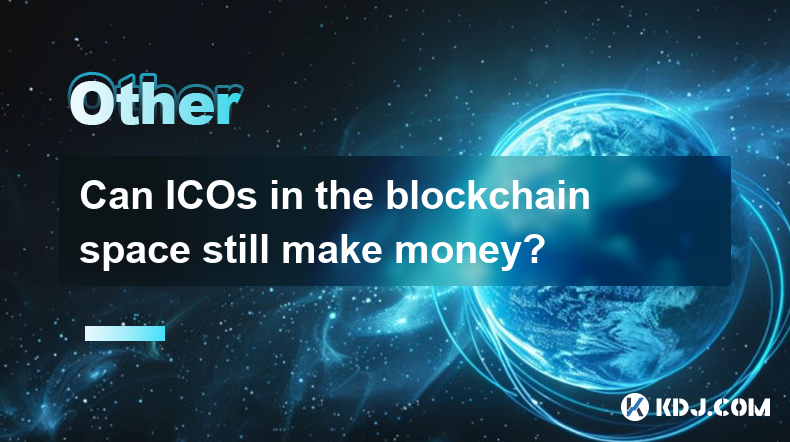
Can ICOs in the blockchain space still make money?
Apr 17,2025 at 08:29pm
The landscape of Initial Coin Offerings (ICOs) in the blockchain space has evolved significantly since their peak in 2017 and 2018. Despite the increased regulatory scrutiny and the rise of alternative fundraising methods like Security Token Offerings (STOs) and Initial Exchange Offerings (IEOs), ICOs can still be a viable way to raise funds and generat...

Can the application of blockchain in supply chain finance bring benefits?
Apr 15,2025 at 04:00pm
Can the application of blockchain in supply chain finance bring benefits? The integration of blockchain technology into supply chain finance has garnered significant attention in the cryptocurrency and financial sectors. This article explores how blockchain can potentially revolutionize supply chain finance, detailing its benefits and providing a compre...
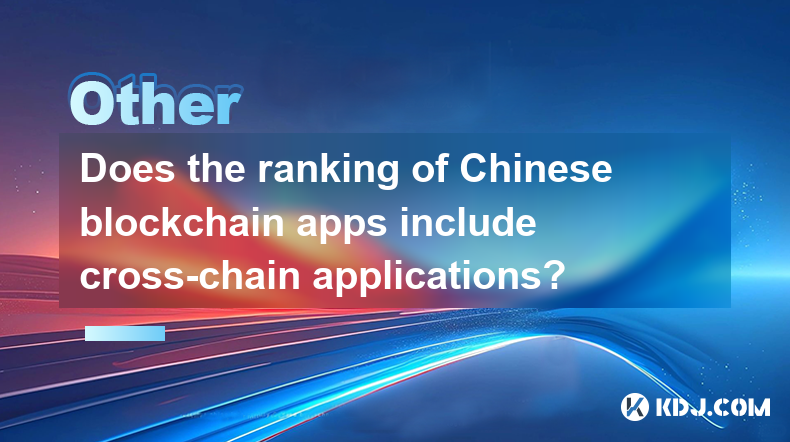
Does the ranking of Chinese blockchain apps include cross-chain applications?
Apr 14,2025 at 04:00pm
The ranking of Chinese blockchain apps is a comprehensive evaluation that takes into account various aspects such as user base, transaction volume, and technological innovation. A pertinent question arises regarding whether these rankings include cross-chain applications. Cross-chain applications, which allow different blockchain networks to interact an...
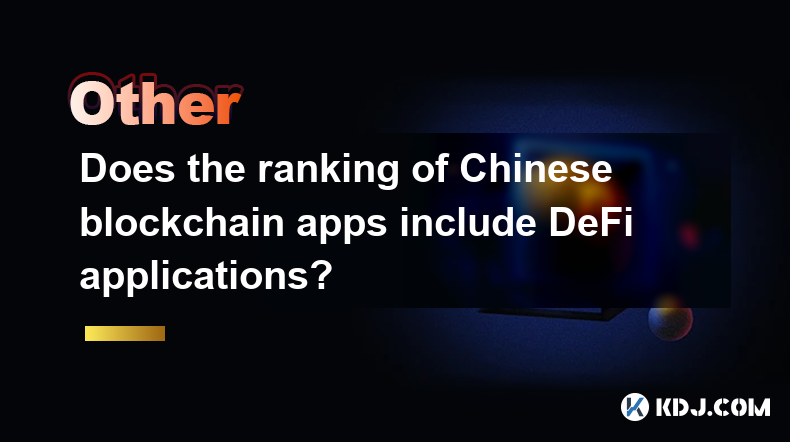
Does the ranking of Chinese blockchain apps include DeFi applications?
Apr 15,2025 at 06:57am
The ranking of Chinese blockchain apps is a comprehensive list that showcases the most popular and influential applications within the cryptocurrency ecosystem. One question that often arises is whether these rankings include DeFi applications. To answer this, we need to delve into the specifics of how these rankings are compiled and what types of appli...
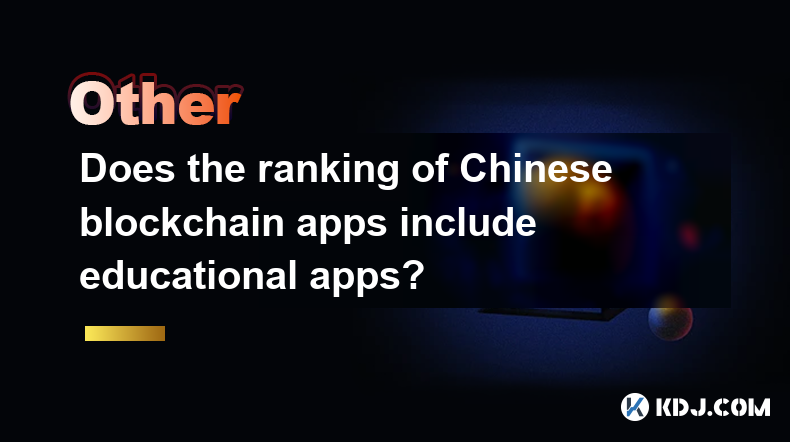
Does the ranking of Chinese blockchain apps include educational apps?
Apr 16,2025 at 03:35am
The ranking of Chinese blockchain apps often includes a variety of categories, from finance and gaming to social networking and beyond. One question that frequently arises is whether these rankings include educational apps. To address this, we need to delve into the specifics of how blockchain apps are categorized and ranked in China, and whether educat...
Does the ranking of Chinese blockchain apps include enterprise-level applications?
Apr 15,2025 at 06:42am
The ranking of Chinese blockchain apps often includes a variety of applications, ranging from consumer-focused to enterprise-level solutions. Understanding the scope and criteria for these rankings is essential to determine if enterprise-level applications are included. This article delves into the specifics of how Chinese blockchain app rankings are co...

Can ICOs in the blockchain space still make money?
Apr 17,2025 at 08:29pm
The landscape of Initial Coin Offerings (ICOs) in the blockchain space has evolved significantly since their peak in 2017 and 2018. Despite the increased regulatory scrutiny and the rise of alternative fundraising methods like Security Token Offerings (STOs) and Initial Exchange Offerings (IEOs), ICOs can still be a viable way to raise funds and generat...

Can the application of blockchain in supply chain finance bring benefits?
Apr 15,2025 at 04:00pm
Can the application of blockchain in supply chain finance bring benefits? The integration of blockchain technology into supply chain finance has garnered significant attention in the cryptocurrency and financial sectors. This article explores how blockchain can potentially revolutionize supply chain finance, detailing its benefits and providing a compre...

Does the ranking of Chinese blockchain apps include cross-chain applications?
Apr 14,2025 at 04:00pm
The ranking of Chinese blockchain apps is a comprehensive evaluation that takes into account various aspects such as user base, transaction volume, and technological innovation. A pertinent question arises regarding whether these rankings include cross-chain applications. Cross-chain applications, which allow different blockchain networks to interact an...

Does the ranking of Chinese blockchain apps include DeFi applications?
Apr 15,2025 at 06:57am
The ranking of Chinese blockchain apps is a comprehensive list that showcases the most popular and influential applications within the cryptocurrency ecosystem. One question that often arises is whether these rankings include DeFi applications. To answer this, we need to delve into the specifics of how these rankings are compiled and what types of appli...

Does the ranking of Chinese blockchain apps include educational apps?
Apr 16,2025 at 03:35am
The ranking of Chinese blockchain apps often includes a variety of categories, from finance and gaming to social networking and beyond. One question that frequently arises is whether these rankings include educational apps. To address this, we need to delve into the specifics of how blockchain apps are categorized and ranked in China, and whether educat...

Does the ranking of Chinese blockchain apps include enterprise-level applications?
Apr 15,2025 at 06:42am
The ranking of Chinese blockchain apps often includes a variety of applications, ranging from consumer-focused to enterprise-level solutions. Understanding the scope and criteria for these rankings is essential to determine if enterprise-level applications are included. This article delves into the specifics of how Chinese blockchain app rankings are co...
See all articles
























































































